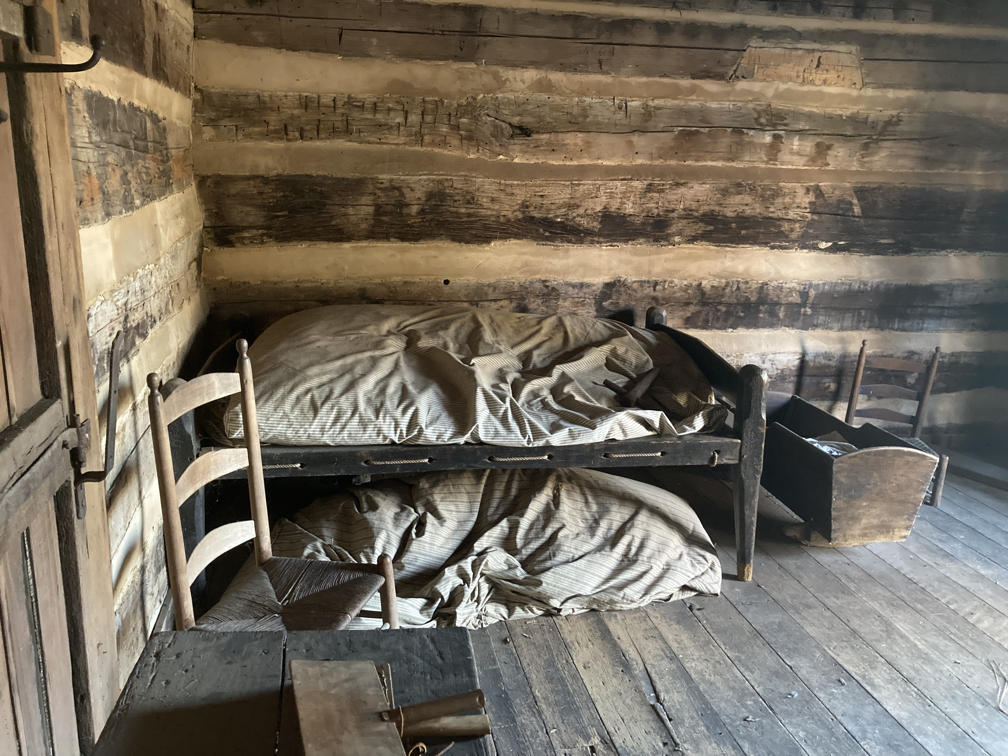The City of Franklin’s website lists Assault on the Cotton Gin as a historic park at 1259 Columbia Pike. It was described as a one acre park, which led me to believe initially that there would not be much to explore. The park was a Historic Memorial Park that is a “monument to the Assault on the Cotton Gin during the Battle of Franklin”. The area was where four Confederate divisions attacked the Union line. There were many Confederate casualties including several generals.
The GPS guided me to an empty field with historical marker signs dotting the landscape with no discernable pattern. There was no obvious parking, and I was left with a decision to abort my mission or drive until I found adequate parking. I found an empty lot in the middle of a residential neighborhood and had a nagging anxiety, wondering if my car would get towed. I decided to take the chance.
I cut through a few yards in the direction of the park hoping no one would come out screaming at me. When I got to the park, I was hit with the realization that I might not come away from this adventure with many pictures or anything to write about. The park is right on one of the main thoroughfares in Franklin, Columbia Pike. As the steady stream of cars passed, I wondered if they wondered what in the world I was doing in this empty field by myself surrounded by a couple Civil War era cannons.

I read several of the signs and learned that the “gin” in cotton gin is short for “engine”. I was flabbergasted. One of the signs had a picture of “Unidentified Confederate Tennessee soldiers”. I supposed that most people throughout history are “unidentified” as most of us will be in the future. I looked at the picture for a few moments and was struck by how young and thin they were. They reminded me of people that I’ve known over the years. Just regular people with a life that was important to them. They ate. They slept. They had hopes and dreams, and now their picture was in a one acre park that doesn’t get much foot traffic from what I could tell. As I listened to the traffic motoring by, I was struck by the juxtaposition between a hallowed land where much death and destruction took place over 150 years ago and the enchroaching development of the modern world. I wondered what the soldiers would think of the rampant commercialization surrounding the stage where they encountered the greatest of horrors. I wagered that they would think my iPhone was cool.

The highlight of the park was a cannonball monument in the shape of a pyramid. I felt the cold cast-iron and wondered where to go next. I had seen everything in the small park, but a feeling lingered that there was more to experience. I decided to cross the busy street knowing that I would serendipitously find something more interesting.

After walking by the public library and a low-income housing development, I spotted what seemed to be a continuation of the small park. There were several old buildings I could see in the distance. Once again I wondered if I was allowed to be traipsing around these grounds. There was a garden with plots of soil and some interesting trees that were aligned symmetrically. I made a mental note to come back in the summer when the beauty would be easier to spot.


I walked towards the old buildings, and I felt a bit more comfortable when I saw an old couple walking around looking inside the buildings. When I reached the buildings, I realized I was on top of a high hill. I went to the apex of the hill and was rewarded with a beautiful view of the rolling hills surrounding Franklin.

One of the old buildings was the slave quarters and the other a house where one of the Carters of Carter House notoriety lived. There was an obvious disparity between the Carter’s home and the slave quarters. The slave quarters were bare wood with an uncomfortable looking bed, while the Carter’s house had windows and aesthetic touches not afforded to the slaves. The dreary slave quarters felt like a sad place to call home.


As I left the grounds and walked toward the Lotz House, I saw a sign that told me I was supposed to have tickets. I knew it. I was an outlaw.
A sign in front of the Lotz House indicated that the house was open to visitors. There were no signs of life anywhere, and I felt uneasy about entering the house. I thought of Rene Girard’s mimetic theory where all desire was created by others. We wanted the fancy house and cars because everyone else wanted the fancy house and cars. If no one else wanted to be at the Lotz House, what did my desire say about me?
I entered the house and was immediately met by an older gentleman sitting on a wooden bench surrounded by artifacts from a bygone era. He seemed genuinely happy to have a visitor. He explained that they offer a guided tour and the next one started at 4pm. I was allowed to go into the gift shop but not tour the house on my own. Forgoing the guided tour, I perused the small shop and paid special attention to the interesting books written by local historians on a small rack by the door. I’ve always been a sucker for books. The gentleman and I discussed the weather and the finer points of Tennessee football. I had an affinity for the guy and left happy that I had wandered inside.
